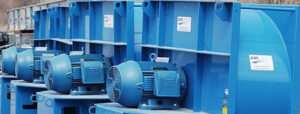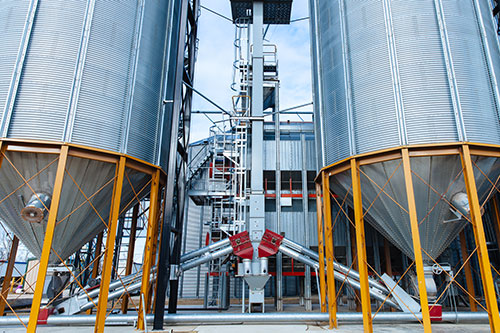In the fast-paced world of agriculture, staying ahead often means investing in equipment that keeps your operation running efficiently and safely. Whether you’re managing advanced grain systems or a modest storage setup, having a proactive plan for replacing obsolete or unsafe grain management equipment is critical to maximizing efficiency, safety, and profitability. Here are some tips on how to develop a replacement schedule tailored to your grain operation’s needs.
Step 1: Conduct Regular Equipment Audits
The first step in any replacement plan is understanding the current state of your equipment. Grain bins, grain handling equipment, and other critical components should be inspected regularly for signs of wear and tear and any issues should be logged. Look for:
- Structural issues: Rust, corrosion, or weakened panels on grain bins can lead to catastrophic failures.
- Inefficiencies: Aging conveyors, augers, or dryers may no longer meet the throughput or energy efficiency demands of your operation.
- Safety concerns: Grain handling systems that lack modern safety features can increase the risk of injury or accidents.
By establishing a regular audit schedule, such as quarterly or annually, you can identify potential problems before they become emergencies.
Step 2: Prioritize Replacement Based on Risk
Once you’ve identified equipment that may need replacing, prioritize items based on their impact on safety and operational efficiency. For example:
- Critical failures: Equipment that compromises safety—like outdated grain bin safety ladders or malfunctioning grain dryers—should be replaced immediately.
- Performance bottlenecks: If your grain handling system design is slowing down harvest or loading processes, prioritize upgrades that address those inefficiencies.
- Energy inefficiency: Older equipment often consumes more energy than modern alternatives. Replacing outdated systems with energy-efficient models can save costs in the long run.
Step 3: Align Replacement with Seasonal Downtime
Timing is everything in agriculture. Plan major replacements or upgrades during periods of low activity, such as post-harvest or before planting season. This minimizes disruption to your operation while ensuring your grain management system is ready for peak demand.
Step 4: Explore Advanced Grain Systems 
When replacing equipment, it’s the perfect time to consider whether an upgrade to advanced grain systems is right for your operation. Modern innovations in grain handling equipment, such as automated controls, remote monitoring, and precision grain handling system design, can significantly enhance efficiency and safety.
Key technologies to consider include:
- Smart grain bin monitoring systems that track temperature and moisture levels in real time.
- High-capacity conveyors and bucket elevators designed to minimize spillage and energy usage.
- Modern aeration systems that reduce the risk of spoilage and improve storage conditions.
Step 5: Budget for Long-Term Success
Replacing grain management equipment is a significant investment, but careful budgeting can make it more manageable. Consider setting aside a portion of your yearly budget for equipment updates or exploring financing options to spread out costs over time. Additionally, calculate the return on investment (ROI) for new equipment—many advanced systems pay for themselves through increased efficiency and lower maintenance costs.
Step 6: Partner with Experts in Grain Handling System Design
Choosing the right equipment for your operation is not a one-size-fits-all decision. Partnering with a trusted provider ensures you’re selecting grain bins, grain handling equipment, and system designs that are tailored to your operation’s unique needs.
A proactive replacement schedule for grain management equipment isn’t just about maintaining what you have—it’s about improving safety, efficiency, and profitability. By auditing your current equipment, prioritizing replacements, leveraging advanced grain systems, and working with trusted experts, you can keep your operation running smoothly and ready for future challenges.
At Valley View Agri-Systems, we’re here to help you navigate every step of the process. With decades of experience, our team can help you assess your current setup, recommend the best upgrades, and create a seamless transition plan. Contact us today to learn more about how we can optimize your grain handling system design and keep your operation ahead of the curve.

